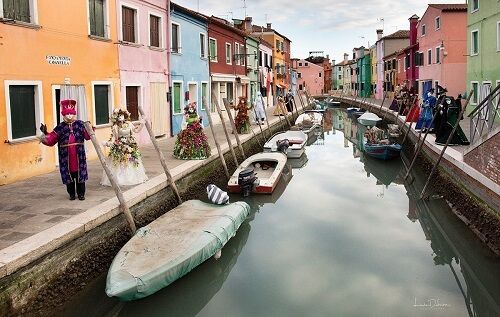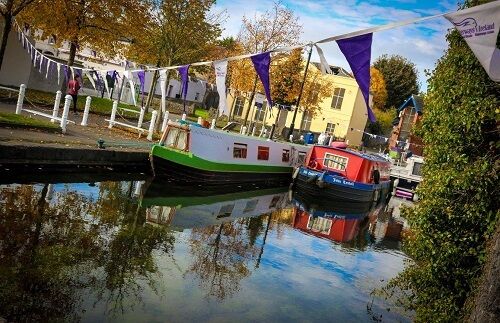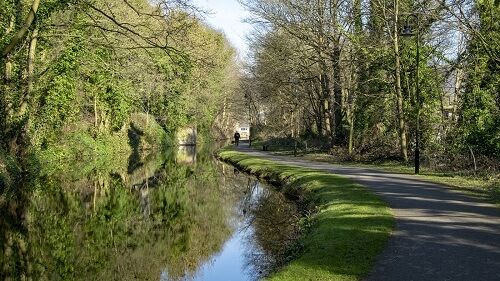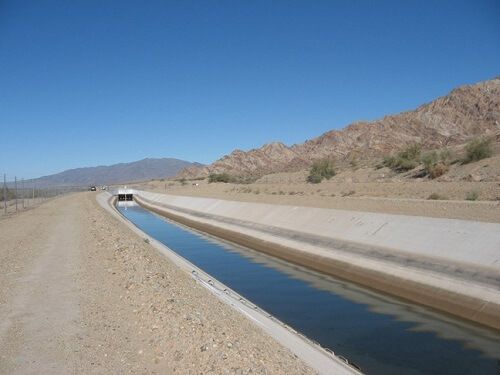A canal is an artificial waterway. The word "canal" originates from the Old French word chanel, which means “channel.” Sometimes it is also known as navigation.
In ancient time, A canal is used to connect waterfalls with the intention of shortening routes. Now it is constructed to allow the passage of boats or ships inland or to convey water for irrigation, human-made strip of water used for irrigation or boat access to a more significant body of water.
A canal plays a vital role when it comes to transportation and global commerce. We use the canal for irrigation, land drainage, urban water supply, hydroelectric power generation, transportation of cargo and people, power generation, the canal is also used to connect industrial centers with ports to speed movement of raw materials. Water filled canals at high levels can deliver water to any place where there is a water crisis. However, Canals weaken the foundation of the dam.

Types of Canals
We can identify different types of canals based on usage, discharge, branches, provider, alignment, etc.
Based on usage there are two types of canals:
Based on discharge there are five types of canals:
Based on provider canals can be classified into two types
Based on alignment there are three canal types:
{adselite}
Canal Types Based on Usage
Aqueducts
Aqueduct is a significant watercourse which carries water from a source to the far distribution point. There are many versions of aqueducts. The simplest types are mostly small ditches cut into the earth. They run through underground tunnels. However, modern aqueducts use the pipeline as their path. These types of canals are used for the conveyance and delivery of water for consumption, and agricultural irrigation.
Waterways

Waterways are the type used for carrying ships and boats and conveying people. Waterway paths are known as a secondary by-product of our country’s extensive historical waterway network, and their essential contribution to everyday life has mostly gone unrecognized. They include water features like river, canal, streams, as well as lakes, reservoirs, and docks. Related features of waterways include weirs, locks, rapid, etc. Waterways provide a safe operating environment by reflecting the local conditions. Mostly waterways are used for transformation, irrigation, headrace, trail race, penstock, spillway, etc. They cater to a wide range of boating and water activities as well as control of pests. Waterways act as refuges for terrestrial fauna species during times of drought and as corridors for dispersal. Waterway paths attract more commuting, tourism. It helps to decrease carbon footprints, reduce road congestion and improve the health of local communities.
Canal Types Based on Discharge
Main Canal
Canals are having discharge more significant than ten cumecs are called as main canals. The main canal is also known as the arterial canal. In drainage, the main canal is the superior canal of the drainage system; it collects water from the drainage canals and conducts it to the water intake. The main canal carries discharge directly from the river. It takes off directly from the upstream side of weir head works or dam. Usually, no direct cultivation is proposed. It supplies water from a river, reservoir, or canal to irrigated lands by gravity flow. It supplies water to a branch canal. We cannot use the main canal for direct irrigation.
Branch Canal

Branch canals have discharge in the range of 5-10 cumecs. The branches of the main canal go in either direction at regular intervals. It offtakes from the main canal where the head discharge is not more than 14-15 cumecs. Branch canal also plays the role of feeder channel for major and minor distributaries. Branch canals do not carry out direct irrigation, but they provide direct outlets.
Major Distributary
Canals who offtake from the main canal or branch canal with head discharge from 0.028 to 15 cumecs are termed as significant distributaries. It takes off water from branch canals. Sometimes getting supply from the main canal, their discharge is less than branch canal. These are mostly known as irrigation channels because of their supply of water to the field directed through outlets.
Minor Distributary
Canals in which discharge ranged from 0.25 up to 3 cumecs are termed as minor distributors. It offtakes from a major distributary carrying discharge less than 0.25 cumecs are termed as minor distributary. Sometimes minor distributary gets supply from the branch canals. The discharge in minor distributary is less than in the major distributary. They also provide water to the courses through outlets provided along with them.
Watercourse or Field Channel
The discharge in watercourses is less than 0.25 cumecs. A field channel either take off from a significant distributary or minor- it solely depends on which extent the irrigation will happen. In a few cases, it also takes off water from the branch canal for the field. Small channels which carry water from the outlet of a major or minor distributary or a branch canals to the areas to be sprayed. There are small channels for feeding water to the irrigation fields.
Canal Types Based on the Provider
Unlined Canals
Unlined canals consist of beds and banks made of natural soil. They are not provided with a lining of impervious materials. It produces the growth of aquatic weed retards the flow which leads to massive maintenance cost. Unlined canals can tolerate velocities no more than 0.7 m/s because of erosion. In unlined canals, there is a danger of canal bank breakage caused by overtopping, erosion and animal burrowing. Weeds had severely slowed down the water flow of the canals, preventing up to 50% of the water from reaching the tail end of the canal. It also causes waterlogging of the adjacent net.
Lined Canal

Lined canals are provided with a lining of impervious materials on its bed and banks to prevent the seepage of water. The most commonly used types of padding are concrete, shotcrete, brick or burnt clay tile, boulder, concrete blocks, stone masonry, sand-cement, plastic, and compacted clay. Possible benefits of lining a canal include water conservation; no seepage of water into adjacent land or roads; reduced canal dimensions; and reduced maintenance.
Canal Types Based on the Alignment
Contour Canal
A contour canal is an artificial canal also renowned for being dug navigable by following the contour line of the land. it traverses to avoid costly engineering works (eg: boring a tunnel through the higher ground, constructing a canal lock to change the level of the canal, building a dam over lower ground, or). Contour canals are distinguished by the meandering course. They can increase the risk of erosion if not properly established.
Watershed Canal
A Watershed is a secure area whose runoff drains into any water substance. The watershed canal aligns with any natural watershed (ridgeline). That's why it is also known as the ridge canal. Aligning a canal (central canal or branch canal or distributary) on the ridge ensures gravity irrigation on both sides of the canal. Water runs downhill. Watershed boundary is the divide that distinct one drainage area from another.
Side Slope Canal
Side slope canals are personalized at the right gradient reaching the contours. It is not on watershed or valley. It does not expropriate drainage channels.

